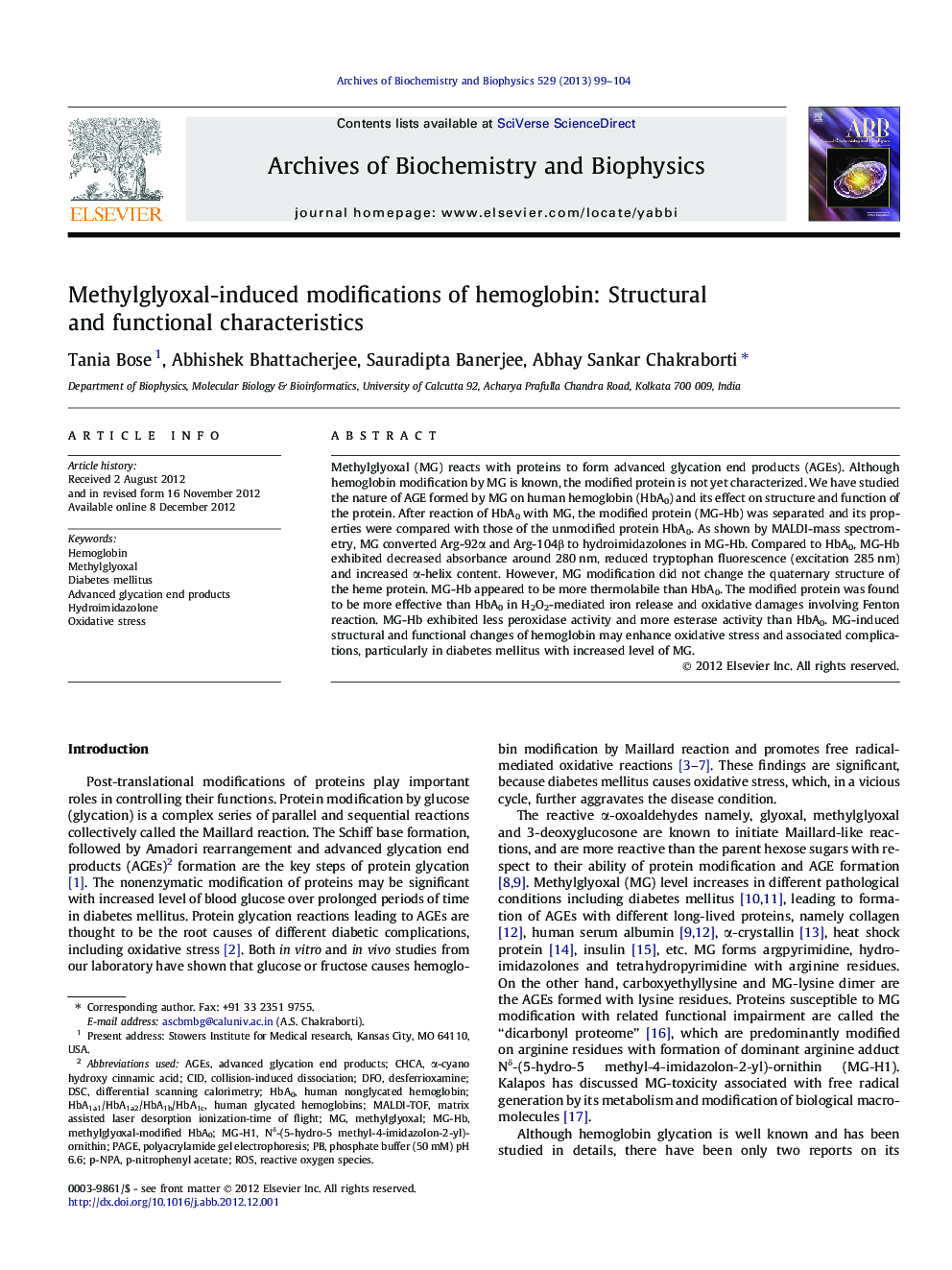| Article ID | Journal | Published Year | Pages | File Type |
|---|---|---|---|---|
| 1925426 | Archives of Biochemistry and Biophysics | 2013 | 6 Pages |
Methylglyoxal (MG) reacts with proteins to form advanced glycation end products (AGEs). Although hemoglobin modification by MG is known, the modified protein is not yet characterized. We have studied the nature of AGE formed by MG on human hemoglobin (HbA0) and its effect on structure and function of the protein. After reaction of HbA0 with MG, the modified protein (MG-Hb) was separated and its properties were compared with those of the unmodified protein HbA0. As shown by MALDI-mass spectrometry, MG converted Arg-92α and Arg-104β to hydroimidazolones in MG-Hb. Compared to HbA0, MG-Hb exhibited decreased absorbance around 280 nm, reduced tryptophan fluorescence (excitation 285 nm) and increased α-helix content. However, MG modification did not change the quaternary structure of the heme protein. MG-Hb appeared to be more thermolabile than HbA0. The modified protein was found to be more effective than HbA0 in H2O2-mediated iron release and oxidative damages involving Fenton reaction. MG-Hb exhibited less peroxidase activity and more esterase activity than HbA0. MG-induced structural and functional changes of hemoglobin may enhance oxidative stress and associated complications, particularly in diabetes mellitus with increased level of MG.
► Methylglyoxal (MG) interacts with human hemoglobin (HbA0) by Maillard reaction. ► MG modifies arginine residues (Arg-92α and Arg-104β) of HbA0 to hydroimidazolones. ► The modified HbA0 (MG-Hb) exhibits altered structural and functional properties. ► MG-Hb releases iron, and produces OH radicals through Fenton reaction. ► MG-Hb may cause free radical reactions and oxidative stress.
